As you discover our Sri Lanka Tour packages, join us on a journey through time as we delve into the history, mystique, and profound spirituality that define the Aluvihare Rock Cave Temple.
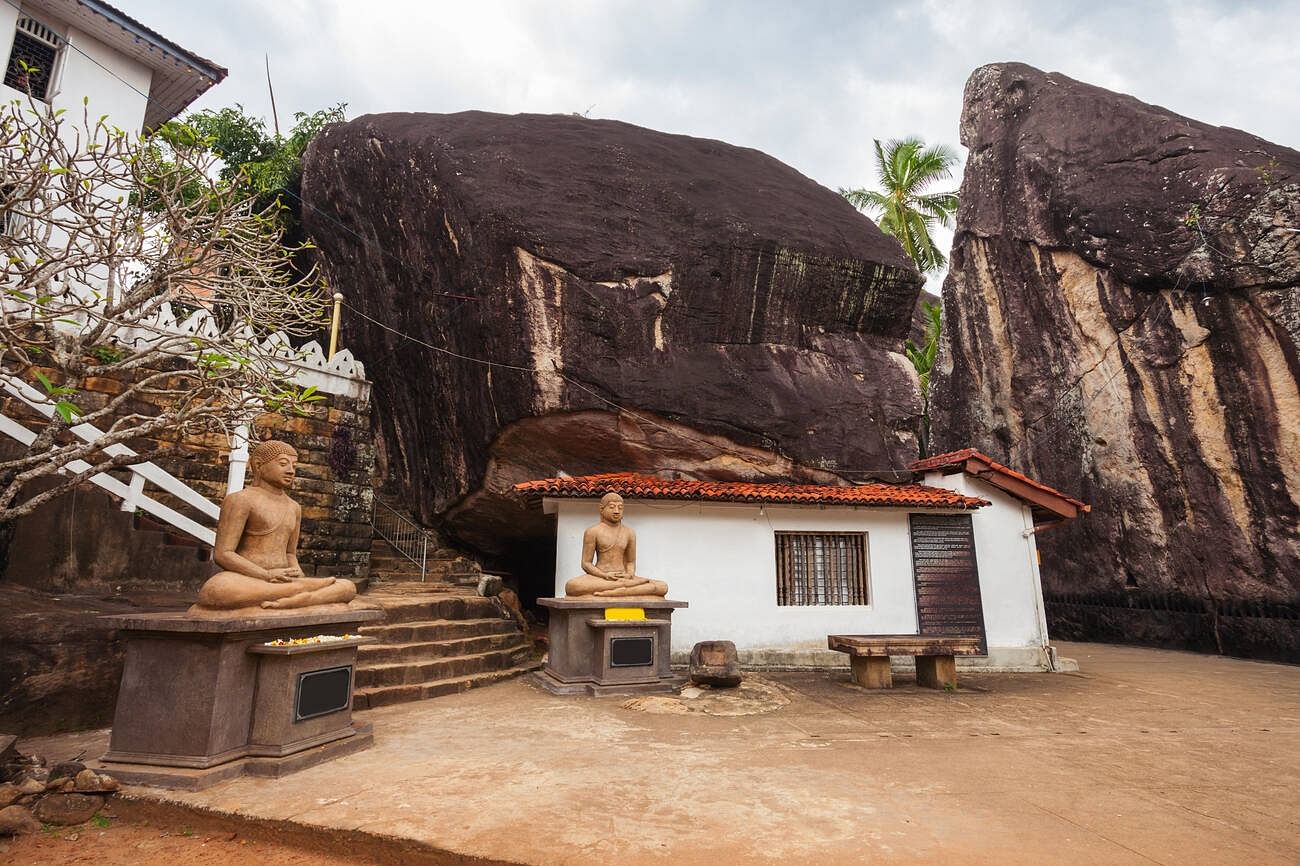
Stone Serenity – Aluvihare Rock Cave Temple
Table of Contents
Table of Contents
- What is the Aluvihare Rock Cave Temple and where is it located?
- History of
- Architecture of
- Destruction and renovation of
- How to Reach Aluvihare Rock Cave Temple
- The significance and importance of Aluvihare Rock Cave Temple
- Things to do at Aluvihare Rock Cave Temple
- Places to Visit near Aluvihare Rock Cave Temple
- Stays near Aluvihare Rock Cave Temple
What is the Aluvihare Rock Cave Temple and where is it located?
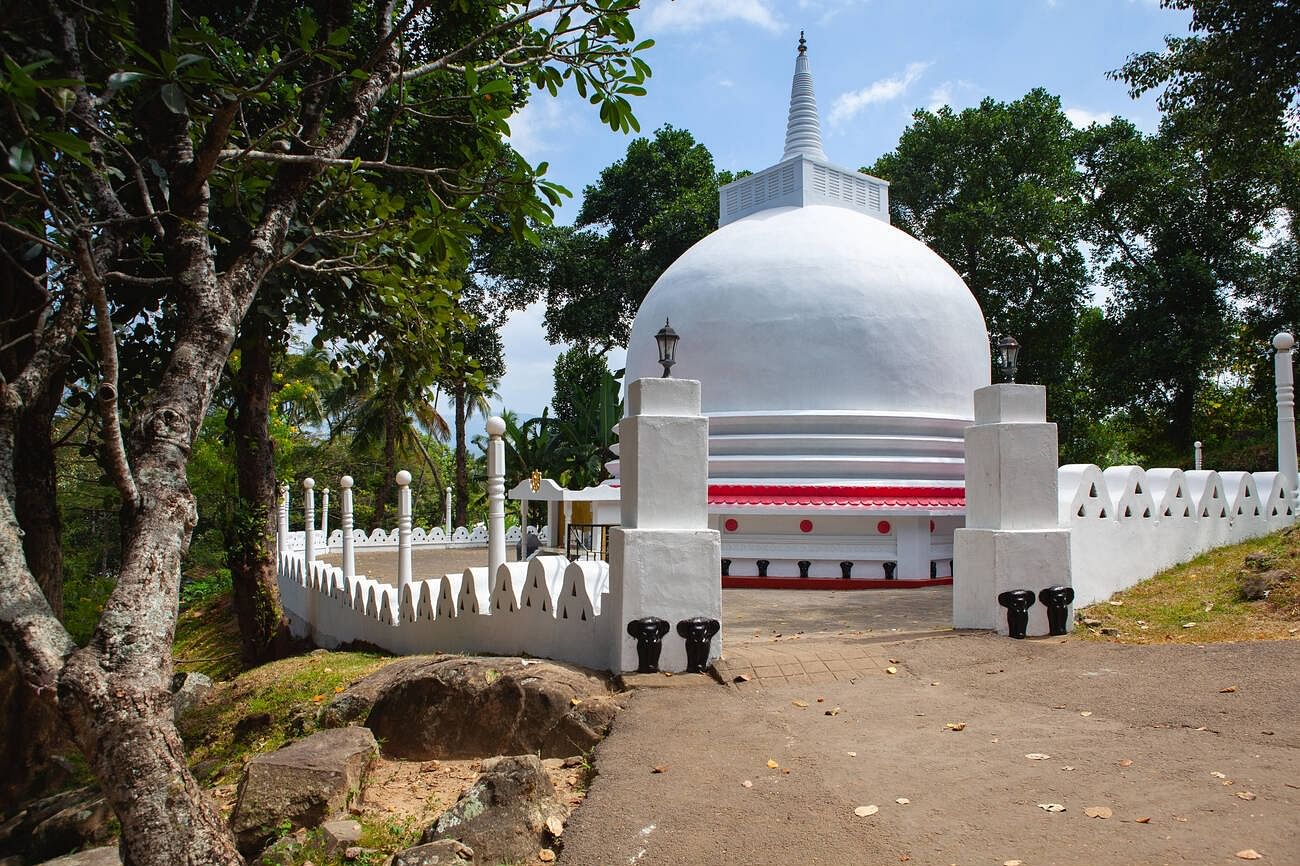
The Aluvihara Rock Temple Sri Lanka holds significant historical importance as it served as the site where the Pali Canon was first transcribed entirely onto Ola leaves. Numerous monastery caves, some adorned with intricate frescoes, are scattered in the vicinity of this revered temple.
History of Aluvihare Rock Cave Temple
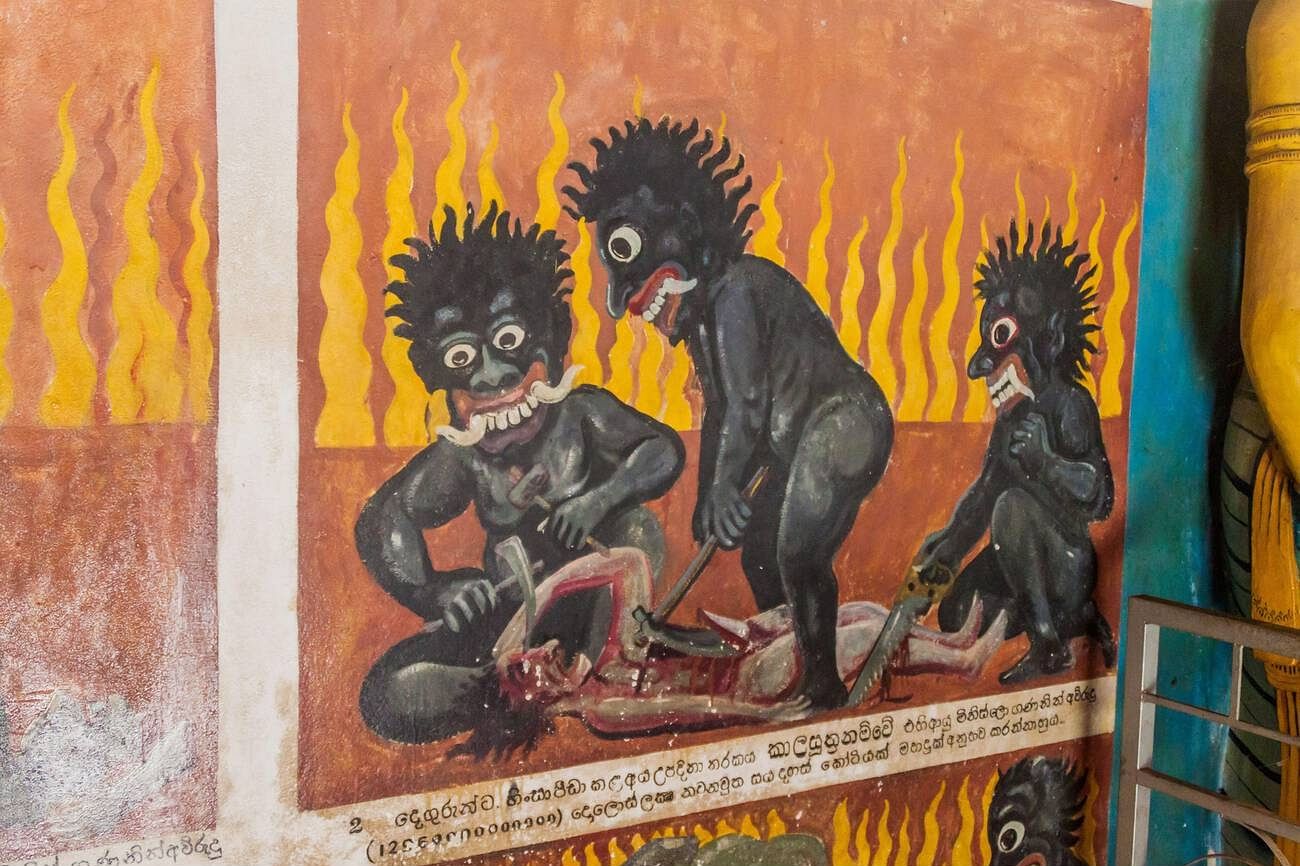
The name Aluvihara is steeped in various meanings and legends, tracing back to its origins. Originally referred to as ‘Alu-Lena’ or ‘Aloka-Lena’ (Luminous Cave) according to legend, during the reign of King Devanampiyatissa (250-210 BC), a monk was engrossed in writing commentaries (Attha Katha). Witnessing this, the King of the Devas, Sakra, illuminated the cave to aid the monk’s endeavor.
Situated facing east, the cave temple welcomed the morning rays of sunrise, which led to its ancient name, Aloka-Lena.
Undoubtedly, the transcription of the Tipitaka brought doctrinal enlightenment to humanity, dispelling ignorance and suffering from the world. Thus, the name Alu-Lena signifies this significant event. In Pali, it is referred to as Aloka-Vihara, signifying Alu (Luminous) and Vihara (Temple).
Another legend states that a colossal figure once utilized three of the rocks as the foundation for his cooking vessel. The term Aluvihara, denoting Ash Monastery, originates from the remnants of ashes left behind by the fire which he used for cooking.
Architecture of Aluvihare Rock Cave Temple
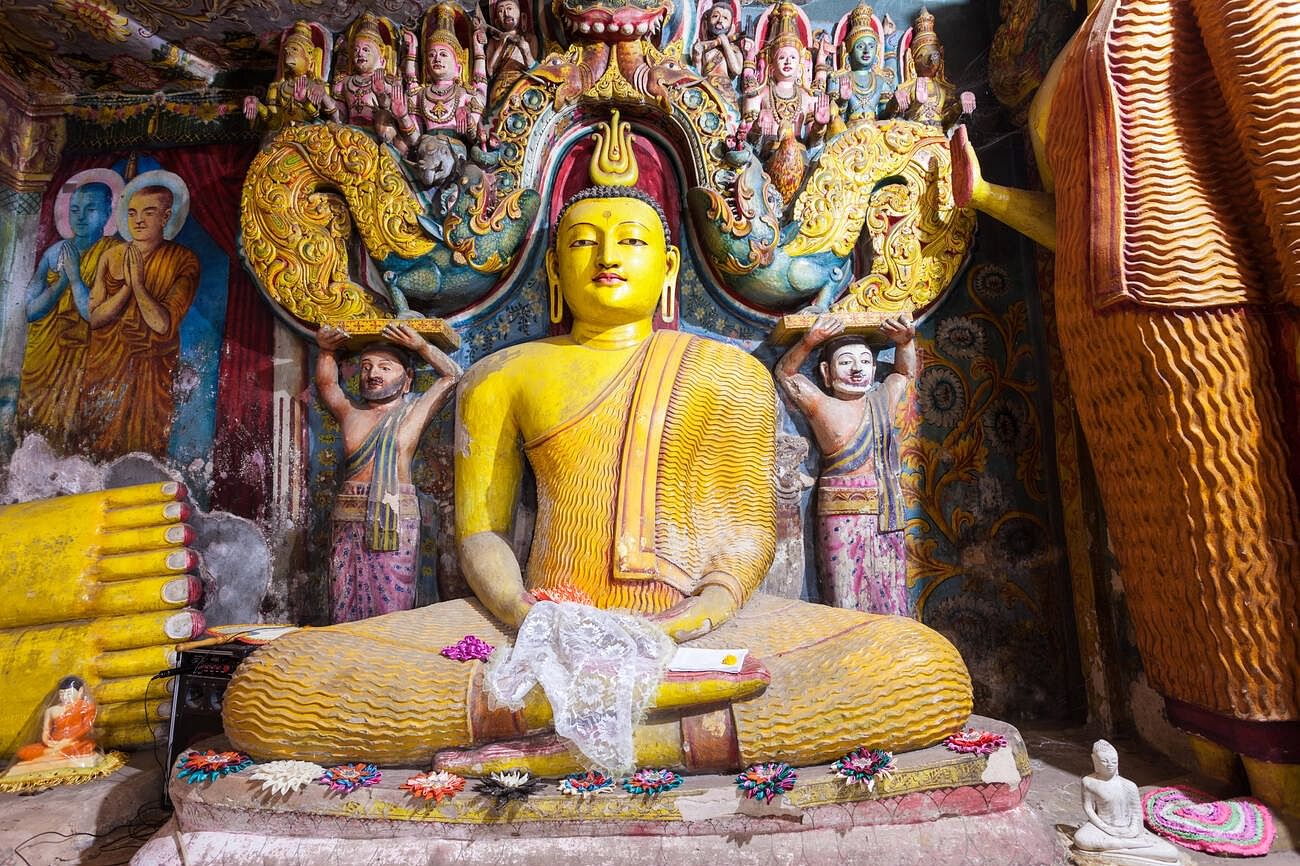
Within the Aluvihare Rock Cave Temple lies a library housing a collection of ancient relics, including Buddhist statues crafted from clay, brass, and marble, some adorned with gold plating. Among these treasures are invaluable Buddha statues gifted by Siam, Cambodia, China, Japan, and Myanmar, alongside other archaeological artifacts.
The first cave, approximately 25 feet in length and 10 feet in height served as one of the locations where ancient Thripitaka scriptures were inscribed on Ola leaves in Pali by Buddhist monks, as evidenced by bold Sinhala lettering denoting their composition during the reign of King Walagamba.
This rock cave sanctuary encompasses an Image House embellished with the traditional Makara Thorana, along with seated, standing, and reclining Buddha statues crafted from terra-cotta. The cave walls are adorned with murals depicting Jathaka stories, while Kandyan period paintings adorn the ceilings.
A spiral stone staircase leads to the summit, where the Sacred Bo Tree stands, providing a serene backdrop to an image house within the rock cave. Further exploration reveals a third cave nestled amidst a cluster of rock boulders, housing another rock cave where the Thripitaka scriptures were transcribed on Ola leaves by ancient Buddhist monks, as well as serving as a spacious residence for present-day Bhikkhus from various regions.
Destruction and renovation of Aluvihare Rock Cave Temple
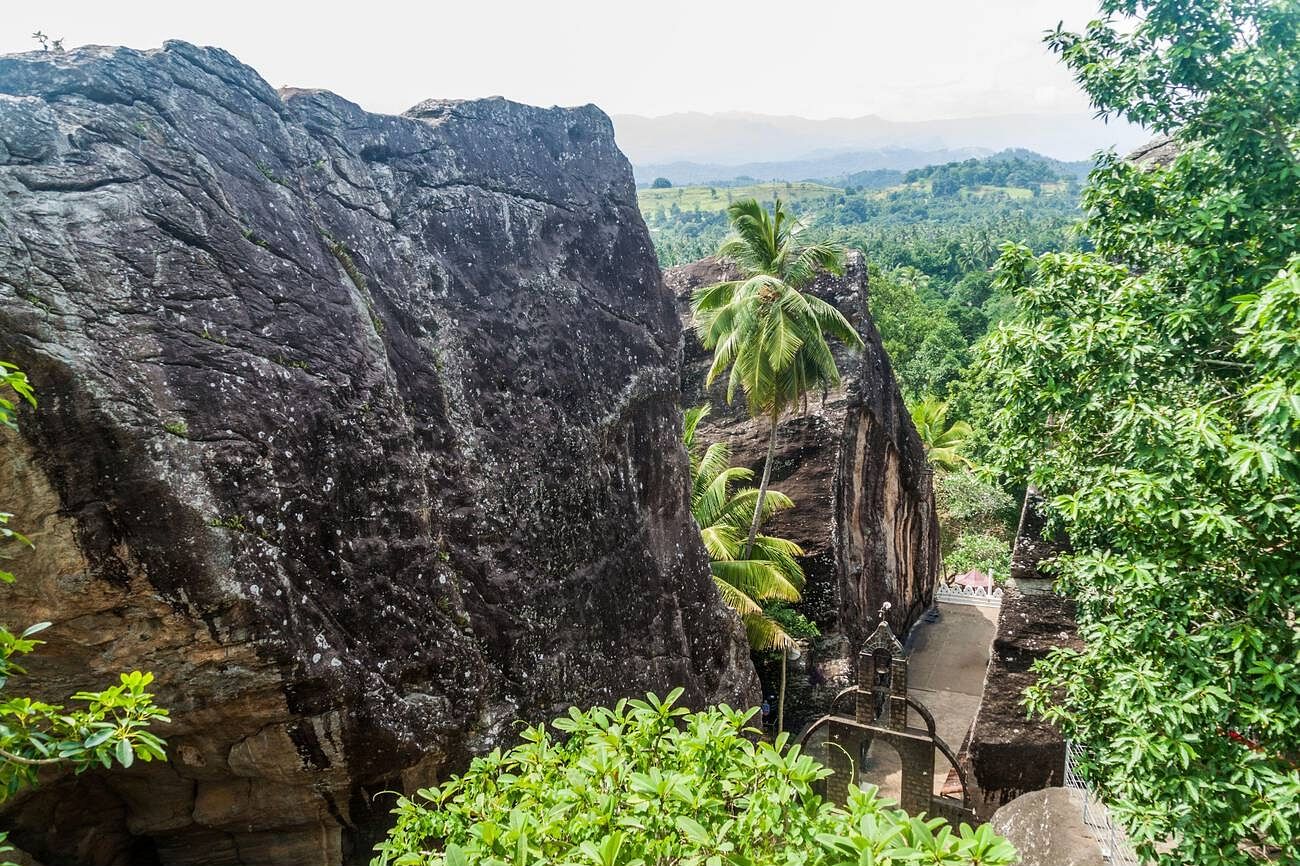
Reconstructing the Tripiaka, or the Buddhist canon, proved to be a lengthy process, spanning many years and involving numerous generations of monks. It wasn’t until 1982 that the first of the three segments of the “baskets of the law” was finally completed, underscoring the painstaking effort required for this monumental task, compounded by the scarcity of monks dedicated to this arduous undertaking.
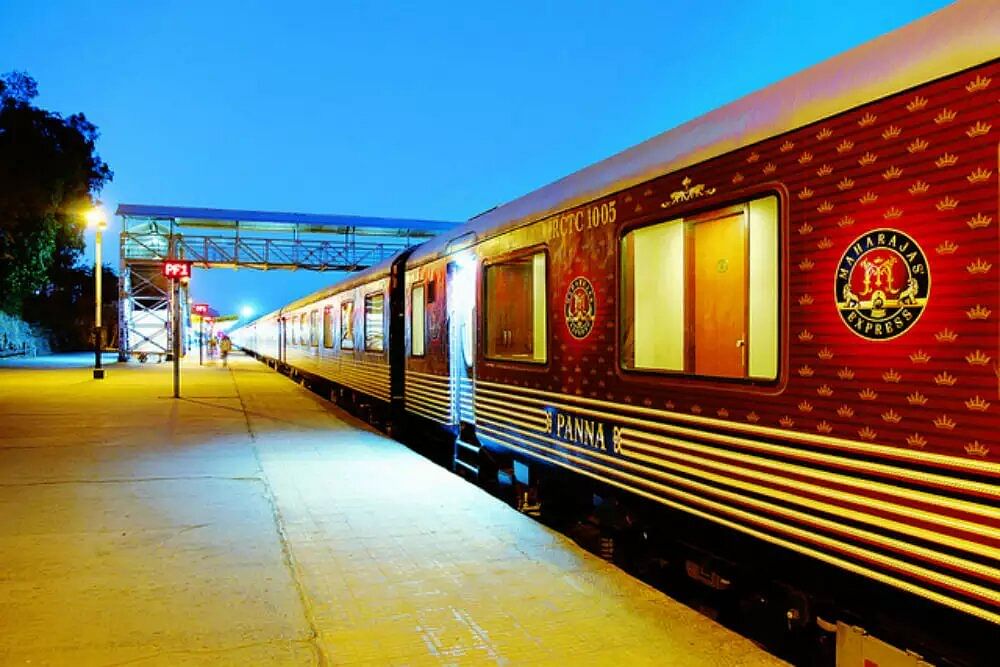
How to Reach Aluvihare Rock Cave Temple
If you’re in the vicinity, you can go for renting a Tuk Tuk in Sri Lanka to hitch a ride to reach the temple. For those traveling from Colombo, catching a bus bound for Kurunegala is an option, with a journey time of approximately 3-4 hours. Alternatively, you can consider traveling by train or taxi, which typically takes around 2.5 hours to reach the temple.
Best time to visit Aluvihare Rock Cave Temple
The best time to visit Sri Lanka and the Aluvihare Rock Cave Temple is during the drier months from January to March. With lower rainfall and warm, sunny days, it’s perfect for discovering the temple’s treasures. Before January, rainfall is more common due to the monsoon season, and after March, temperatures soar, making sightseeing less enjoyable. However, if you can tolerate the heat or occasional rain showers, the temple is accessible year-round.
To make the most of your visit to this ancient site, it’s recommended to start early to avoid both the intense heat and crowds. The gentle morning light also provides ideal conditions for photography. Plan a leisurely lunch break either at your hotel or try a local ‘canteen’, typically a cozy outdoor space connected to a family home where authentic Sri Lankan cuisine is served.
This extended break allows you to escape the midday heat and resume your exploration refreshed in the afternoon. The temple usually remains open until 6 pm-7 pm, offering the opportunity to witness stunning sunsets at the end of your day. Thereafter, you can enjoy the stunning nightlife in Sri Lanka.
The significance and importance of Aluvihare Rock Cave Temple
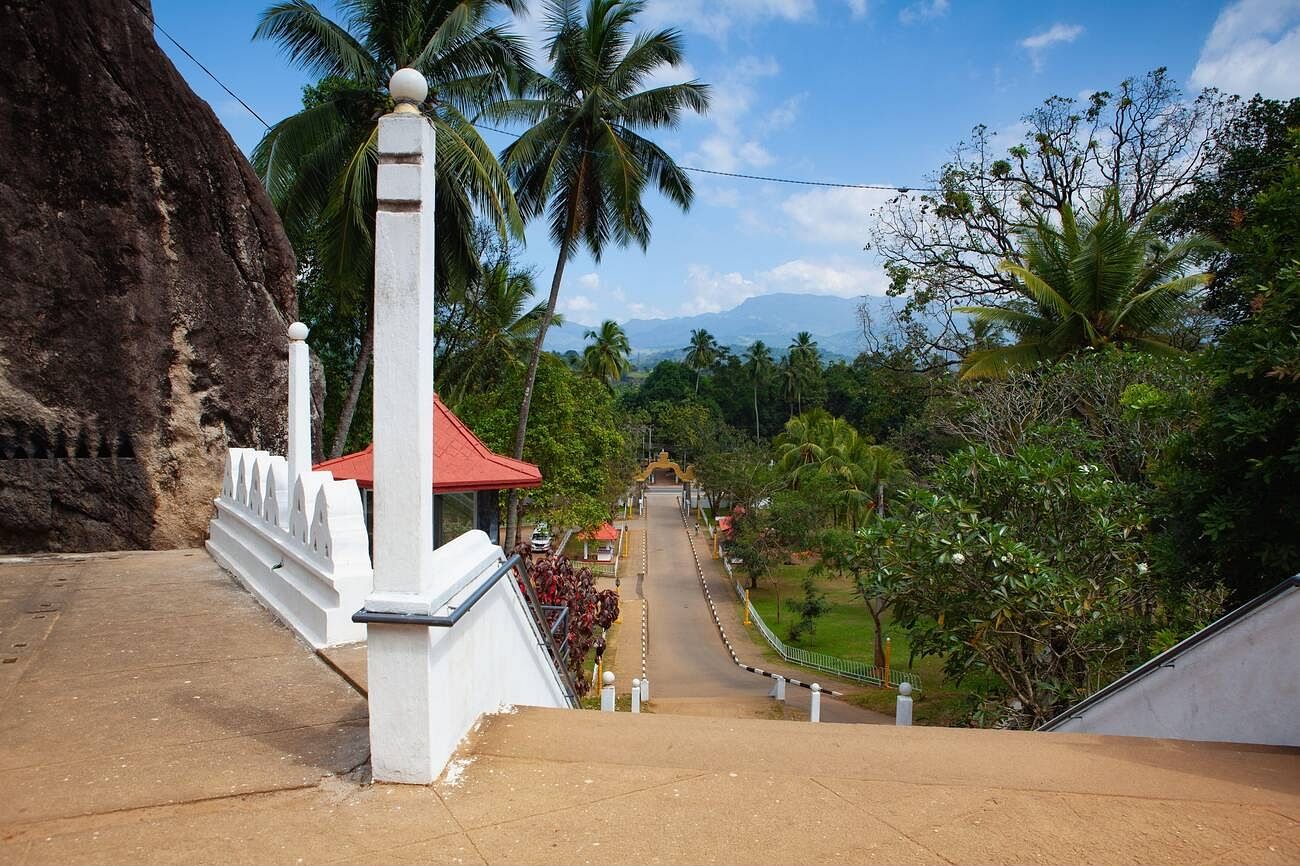
Beyond its religious importance, the temple is a cornerstone of Sri Lankan culture, serving as a center for education, a sanctuary during difficult times, and a custodian of spiritual heritage. It stands as a testament to the island’s unwavering dedication to safeguarding its religious and cultural legacy amidst multiple challenges over centuries. One can only envision the countless seekers of wisdom and solace who have traversed its hallowed grounds through the ages.
Moreover, the temple’s architecture, murals, and statues provide a rich glimpse into the artistic traditions nurtured under Buddhism’s influence in Sri Lanka. These intricate details offer profound insights into the creative and spiritual brilliance of past generations, with each element telling stories of devotion, enlightenment, and the enduring connection between the Dhamma and the island’s soil.
Things to do at Aluvihare Rock Cave Temple
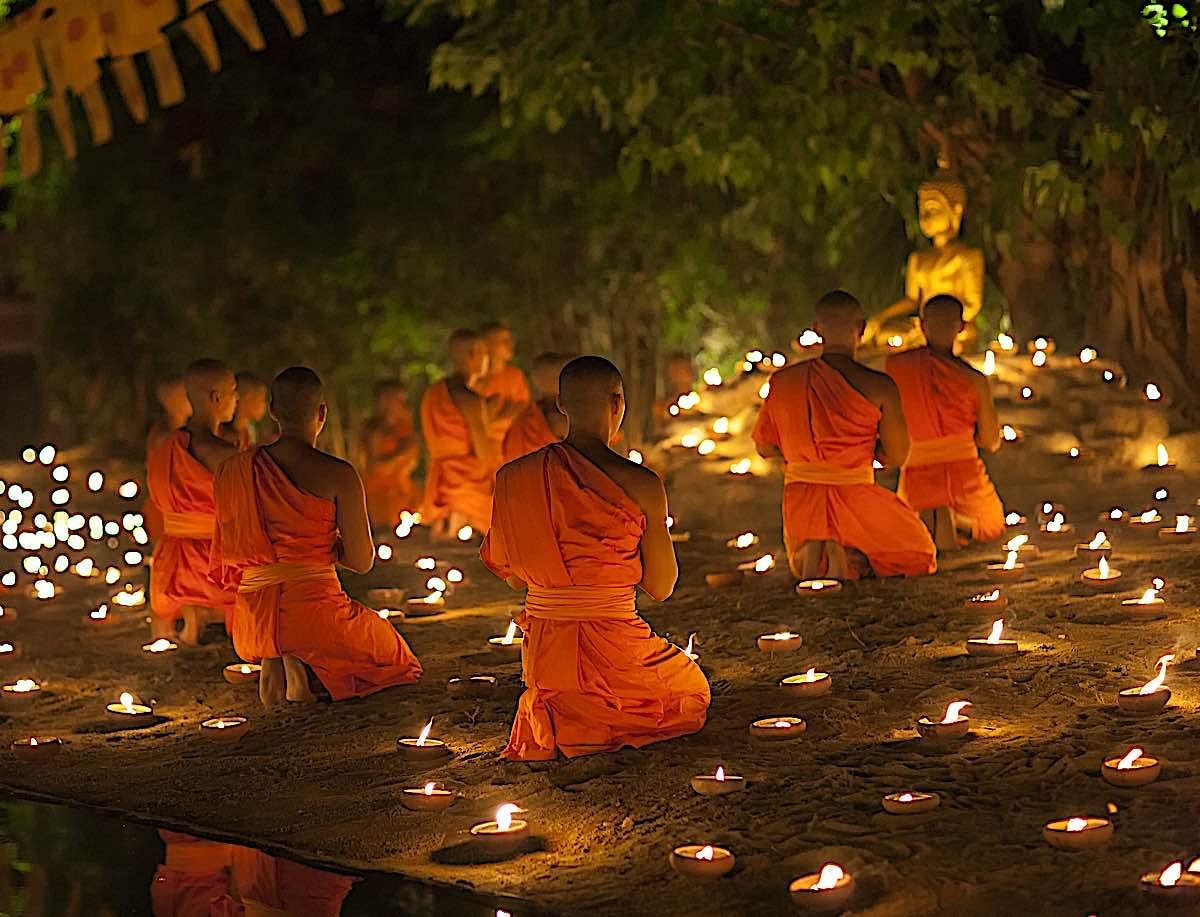
You can ascend the rock to reach the stupa crowning its peak, offering a sweeping vista of the surrounding hills—a perfect setting for inner healing and contemplation. Take a moment to absorb the serenity and contemplate the timeless allure of the natural landscape that has stirred spiritual devotion for generations.
Another highlight is the assortment of sacred relics, including a revered footprint believed to be that of the Buddha himself. Interacting with the resident monks is a great way to immerse yourself as they may share anecdotes or enlighten you about their way of life and rituals, and seize the chance to partake in a meditation session if available.
Do not miss out on the chance to explore the Dharmasala, or ‘Hall of Ola leaves,’ where the sacred scriptures were transcribed. You can also visit the Aluvihare Rock Cave Temple Museum, which showcases ancient manuscripts and artifacts.
Places to Visit near Aluvihare Rock Cave Temple
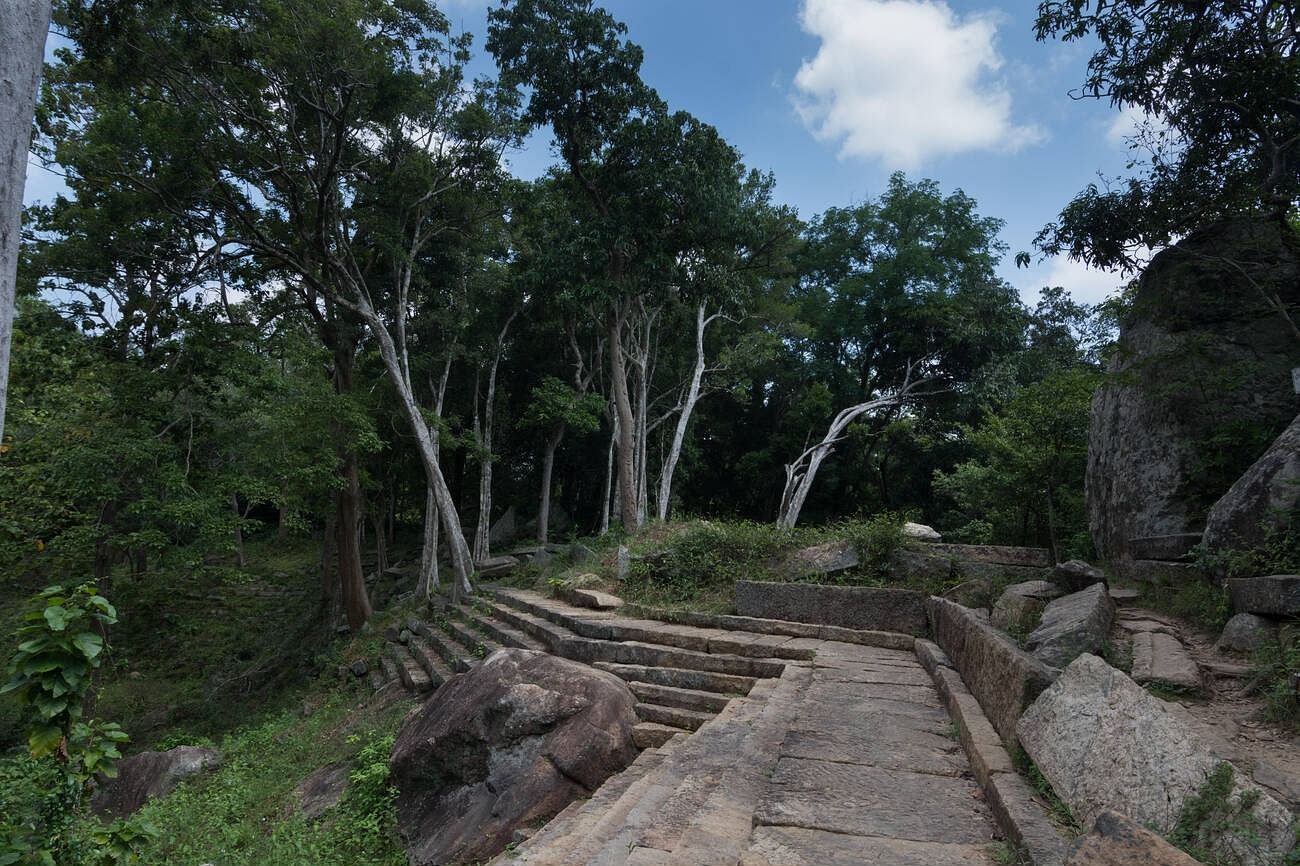
- Ritigala monastery
Situated amidst the dense jungle within the rugged hills of the Ritigala Strict Nature Reserve, the fragmented stone remnants of the Ritigala monastery stand as enigmatic ruins, offering a glimpse into Sri Lanka’s ancient past. Originating from the 4th century, this forest hermitage complex encompasses a series of natural caves where monks sought solitude for meditation and embraced an austere way of life.
Crumbling staircases guide travelers to the Banda Pokuna tank. At the same time, restored pathways lead to various sunken courtyards and elevated terraces, believed to have once served as the monastery’s infirmary and repository of knowledge.
- Aukana
Located 50 km southwest of Anuradhapura, the village of Aukana is renowned for its towering 12-meter-high rock-carved Buddha statue. Esteemed for its remarkable preservation, this intricately crafted sculpture is hailed as one of Sri Lanka’s finest, believed to originate from the 8th or 9th century.
Carved from a solitary rock, the Buddha is depicted standing with his right hand raised to his shoulder, palm open and facing outward, symbolizing courage. His left-hand rests against his body at the shoulder, encouraging worshippers to transcend earthly attachments.
- Yapahuwa
Yapahuwa, once a prominent capital of Sri Lanka during the 13th century, is located at the foot of a massive granite rock. Following its abandonment after being seized by South Indian forces, the historic site boasts a steep, embellished staircase believed to have once housed the sacred Tooth Relic of Yapahuwa. This staircase also leads to a cave temple adorned with frescoes dating back to the 13th century. Ongoing excavations at the site continue to unveil additional stone ruins within the ancient fortress.

Stays near Aluvihare Rock Cave Temple
There are various hotels scattered near the Aluvihare Rock Cave Temple, catering to different budgets and preferences, ranging from budget-friendly to a few boutique choices for added charm. Here are some of our top 5 picks in the region, each offering a unique touch to enhance your Sri Lankan experience.
- Mahaweli Reach Hotel
- Clove Villa
- Aarunya Nature Resort and Spa
- Ashburnham Estate
- Jim’s Farm Villas
Something to take back
A visit to Aluvihare Rock Cave Temple in Sri Lanka offers not just a journey through history, but also a profound spiritual and cultural experience. This remarkable site, with its intricate carvings, towering structures, and serene surroundings, invites us to reflect on the achievements of past civilizations and contemplate the deeper meanings of life.
Whether you’re drawn by curiosity, spirituality, or simply a love for exploration, exploring this beloved rock temple is sure to leave an indelible mark on your soul and deepen your appreciation for the rich tapestry of human heritage.
Get exclusive travel insights & updates into your inbox!
*By clicking subscribe you'll receive emails from WanderOn.
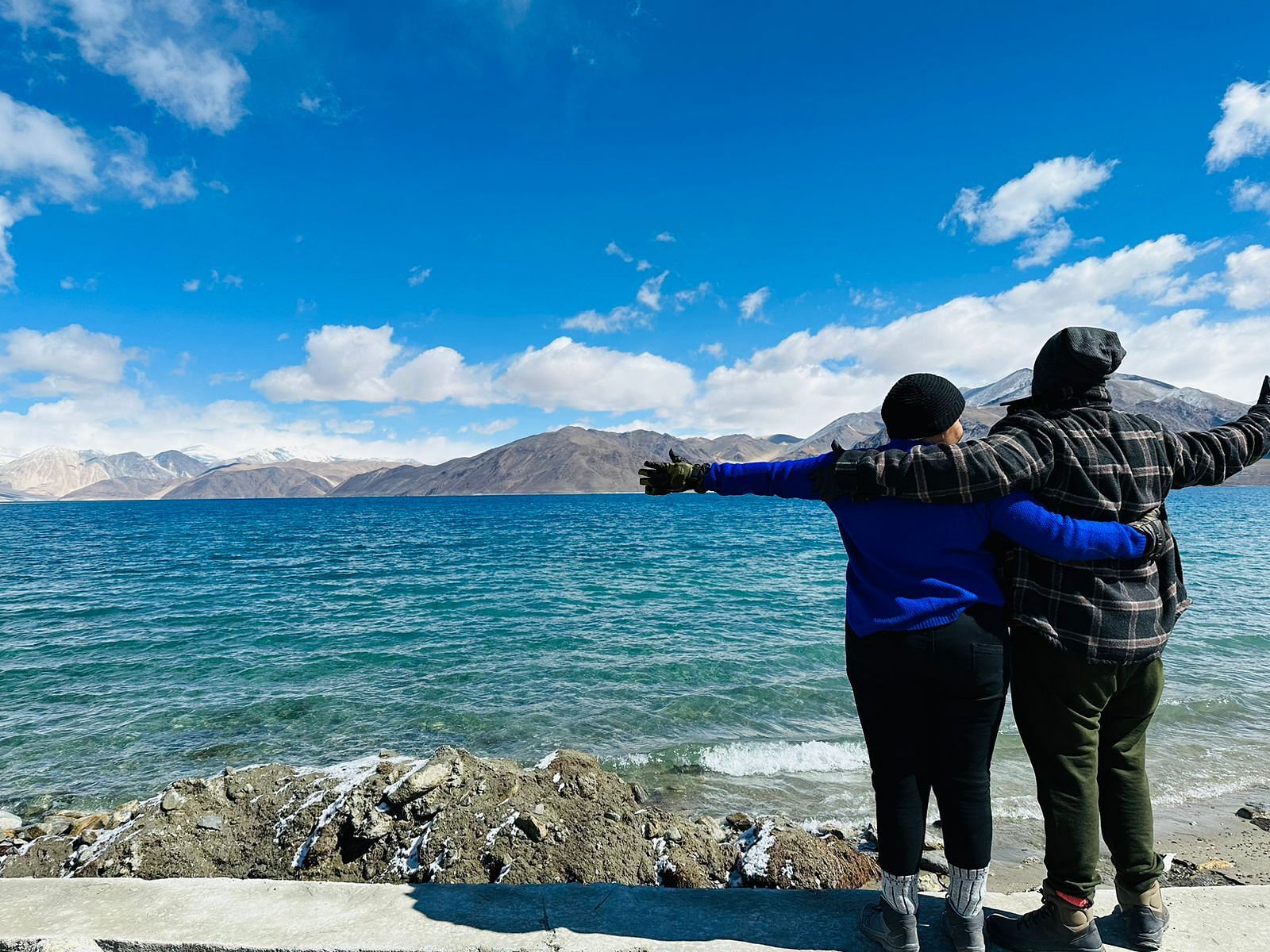
Shrutika Parab
★★★★★24 May 2024
“Thank you Team Wanderon for the amazing Ladakh Experience. Right from the point of making the bookings with Mr. Chakshu to the point of completion of the trip received amicable support.
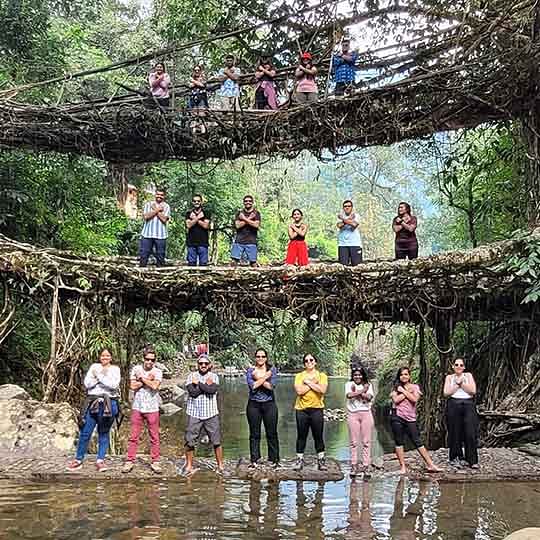
Sonal Shekhar Dash
★★★★★9 May 2024
“I did my first solo trip in India with WanderOn. Initially I was sceptical about their Meghalaya-Kaziranga trip as I didn't have any prior experience with them but the team assured me that it's going to be one of the best experiences of my life.

Archana Awati
★★★★★30 Apr 2024
“In Ladakh, find the perfect blend of culture, adventure, and serenity. December last year I decided that my next trip would be Ladakh but didn’t know how to go about it. I knew I wanted to travel in a group, as I had prior experiences of traveling in a group but wanted an organiser I could trust. Ladakh isn’t like other destinations wherein you need some instructions due to the high altitudes.
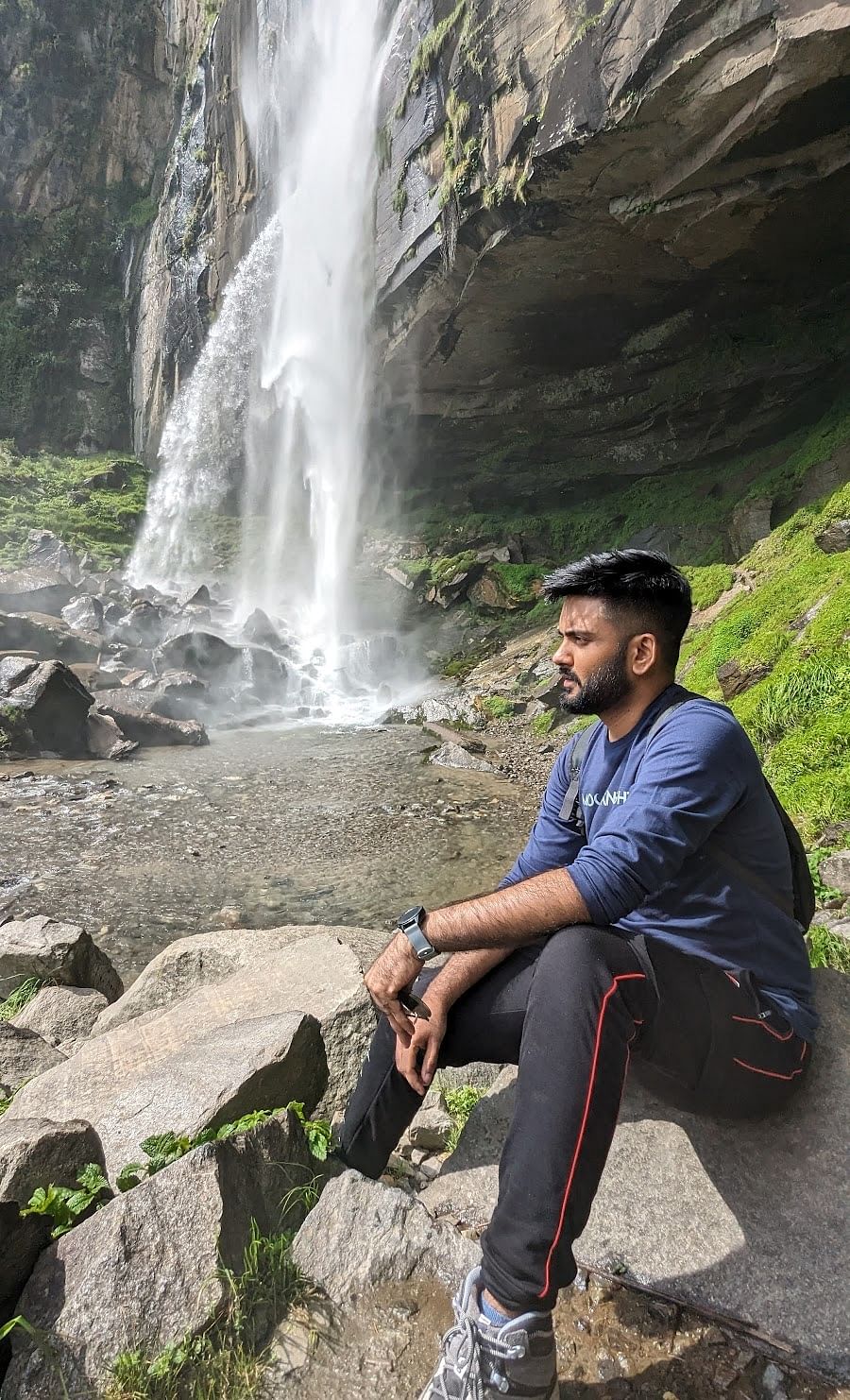
Kartik Dilawari
★★★★★4 Jul 2024
“After an amazing trip to Tirthan with WanderOn, I decided to go to Manali-Jispa with them and yet again, the experience was worth every penny. The place was very beautiful and the quality of service was top-notch, the itinerary was very good and the quality of transportation and stays were very good. Had an awesome time there and made some good friends as well. Lastly, our trip captains Priyasha and Rachit managed the entire trip very well and were so fun and made our trip an experience worth remembering.
FAQ'S
01
How to get to Aluvihare Rock Cave Temple?
If you are close by, a tuk-tuk is an easier option to reach the temple. For people traveling from afar, public transportation such as bus rides and taxis are easily available, which can drop you off at the temple.
02
What is the average time that can be spent at Aluvihare Rock Cave Temple?
03
Most popular time to visit Aluvihare Rock Cave Temple?
04
How did Aluvihara receive its name?
WanderOn Special

WANDERON EXPERIENCES PVT LTD
3rd Floor, Building No-436, Phase IV, Udyog Vihar, Sector-18, Gurugram, Haryana-122015



